   
CEO Picks - The best that international journalism has to offer!
 S69 S69The rise of the Gen Z side hustle   Shola West, 22, works on the media-partnerships team at advertising firm OMD. She combines her full-time role with a part-time business: providing Gen Z career advice through freelance consultancy work. West, who is based in London, says her employer is aware – and supportive – of her side hustle. “At my interview, they made it clear I was welcome to have my personal brand on the side. My CEO recently commented on my LinkedIn post saying what I’d done was brilliant, even though it had nothing to do with my full-time job,” she says. “Their openness means it doesn’t feel like a 9-to-5: it’s a job that works with my passions.”
Continued here
|
| ? |
 |
 S1 S1Research: The Average Age of a Successful Startup Founder Is 45   It’s widely believed that the most successful entrepreneurs are young. Bill Gates, Steve Jobs, and Mark Zuckerberg were in their early twenties when they launched what would become world-changing companies. Do these famous cases reflect a generalizable pattern? In fact, the average age of entrepreneurs at the time they founded their companies is 42. But what about the most successful startups? Is it possible that companies started by younger entrepreneurs are particularly successful? Research shows that among the top 0.1% of startups based on growth in their first five years, the founders started their companies, on average, when they were 45 years old.
Continued here
|
| ? |
 |
 S2 S2How Venture Capitalists Make Decisions   For decades now, venture capitalists have played a crucial role in the economy by financing high-growth start-ups. While the companies they’ve backed—Amazon, Apple, Facebook, Google, and more—are constantly in the headlines, very little is known about what VCs actually do and how they create value. To pull the curtain back, Paul Gompers of Harvard Business School, Will Gornall of the Sauder School of Business, Steven N. Kaplan of the Chicago Booth School of Business, and Ilya A. Strebulaev of Stanford Business School conducted what is perhaps the most comprehensive survey of VC firms to date. In this article, they share their findings, offering details on how VCs hunt for deals, assess and winnow down opportunities, add value to portfolio companies, structure agreements with founders, and operate their own firms. These insights into VC practices can be helpful to entrepreneurs trying to raise capital, corporate investment arms that want to emulate VCs’ success, and policy makers who seek to build entrepreneurial ecosystems in their communities.
Continued here
|
 S3 S3The New Science of Customer Emotions   When a company connects with customers’ emotions, the payoff can be huge. Yet building such connections is often more guesswork than science. To remedy that problem, the authors have created a lexicon of nearly 300 “emotional motivators” and, using big data analytics, have linked them to specific profitable behaviors. They describe how firms can identify and leverage the particular motivators that will maximize their competitive advantage and growth. The process can be divided into three phases. First, companies should inventory their existing market research and customer insight data, looking for qualitative descriptions of what motivates their customers—desires for freedom, security, success, and so on. Further research can add to their understanding of those motivators. Second, companies should analyze their best customers to learn which of the motivators just identified are specific or more important to the high-value group. They should then find the two or three of these key motivators that have a strong association with their brand. This provides a guide to the emotions they need to connect with in order to grow their most valuable customer segment. Third, companies need to make the organization’s commitment to emotional connection a key lever for growth—not just in the marketing department but across every function in the firm.
Continued here
|
| ? |
 |
 S4 S4Stop Over-Apologizing at Work   There are a variety of reasons we may feel the need to say sorry at work, even when it’s not necessary. It could be because we want to be liked, are reeling under a false sense of guilt, or are fighting our perfectionism. While holding yourself accountable for your behavior in the workplace is important, over-apologizing can negatively impact both you and your team. Of course, there are moments when apologizing is necessary. Here are a few examples of when saying sorry is absolutely critical.
Continued here
|
| ? |
 |
 S5 S5How Companies Should Prepare for Repeated Debt-Ceiling Standoffs   Since a major realignment of the U.S.’s two-party political system is unlikely, we can expect partisan conflict and the subsequent debt-ceiling standoffs to continue for the foreseeable future. Corporate managers must not regard debt-ceiling crises as just political gimmicks, as they repeatedly and predictably affect firm profitability, growth prospects, and uncertainty. Managers must proactively gather information, anticipate, plan, and allocate resources in preparation of each crisis. They must be able to capitalize on opportunities that arise from each standoff and be prepared to weather each storm.
Continued here
|
| ? |
 |
 S6 S6How One Ukrainian Company Cultivated Resiliency Amid War   Companies plan for crises and aim to be resilient and adaptive in the face of all kinds of risks, but it’s always easier said than done. And perhaps none of these threats is as serious as war. That’s what Roman Rodomansky had to prepare his company for. He’s the cofounder and COO at Ralabs, a Ukrainian software development company. As Russia prepared to invade his home country, Rodomansky and his leadership team crafted a plan to survive and keep serving clients. He shares how his firm put people first, communicated with customers, and managed to become resilient. Rodomansky wrote the HBR article “A Cofounder of Ralabs on Leading a Ukrainian Start-Up Through a Year of War.”
Continued here
|
| ? |
 |
 S7 S7New Technology Is Overwhelming Sales Teams   Technology has long been used to boost seller productivity, but sales leaders are telling us that efficiency gains have become slower and more expensive. This is because technology intended to help sell frequently makes the salesperson’s job more cumbersome. Sales organizations’ tendency to run most tasks through the sales rep requires an increasing number of complex systems to support.
Continued here
|
| ? |
 |
 S8 S8Sardinia's mysterious beehive towers  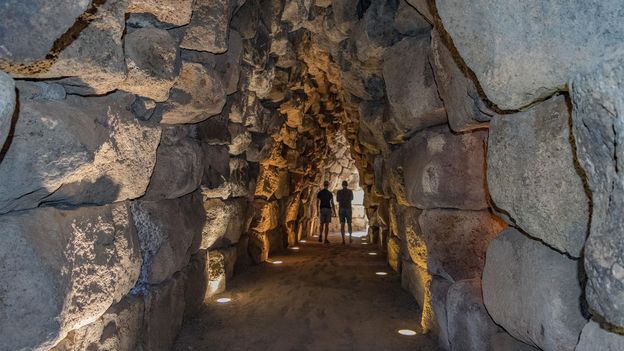 Expecting not to find much more than a pile of big stones, I followed the sign off the motorway into a little car park and there it was, rising from a flat, green landscape covered in little white flowers, with a few donkeys dotted around: Nuraghe Losa. From a distance, it looked like a big sandcastle with its top crumbling away, but as I walked towards it, I began to realise the colossal size of the monument in front of me.Nuraghi (the plural of nuraghe) are massive conical stone towers that pepper the landscape of the Italian island of Sardinia. Built between 1600 and 1200BCE, these mysterious Bronze Age bastions were constructed by carefully placing huge, roughly worked stones, weighing several tons each, on top of each other in a truncated formation.
Continued here
|
 S9 S9The city with gold in its sewage lines   "He burned the sari and from it, handed us a thin slice of pure silver," said my mother, describing a moment that had taken place 30 years ago at her home in the city of Firozabad. The man in her story was no magician, but an extractor. Like many similar artisans in my mother's hometown, he'd go door to door collecting old saris to mine them for their precious metals. Until the 1990s, saris were often threaded with pure silver and gold, and I remember digging into my mother's wardrobe, searching for her glittery outfits like treasure. But as she told me, the extractors were looking for something even more valuable than clothing – they were looking for trash, and a kind of trash specific to this city.
Continued here
|
 S10 S10The mysterious Viking runes found in a landlocked US state  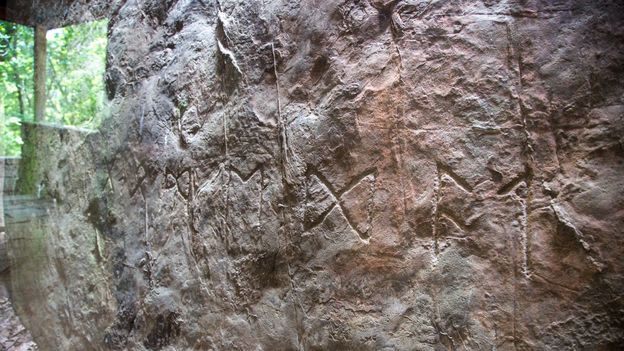 "[Farley] spent the majority of her adult life researching the stone," said Amanda Garcia, Heavener Runestone Park manager. "She travelled all around the US, went to Egypt and went to different places looking at different markings."Faith Rogers, an environmental-science intern and volunteer at the Heavener Runestone Park, led me down a cobblestone path toward one of the 55-acre woodland's biggest attractions – which is also one of the US' biggest historical mysteries. We were deep in the rolling, scrub-forest foothills of the Ouachita Mountains in far eastern Oklahoma, and we were on our way to view a slab of ancient sandstone that still has experts scratching their heads and debating about the eight symbols engraved on its face.
Continued here
|
 S11 S11The true story behind the US' first federal monuments   "Are you sitting down? I have news for you." Gwen Marable's cousin from the US state of Ohio called her at home in Maryland about 27 years ago. "We are descended from the sister of Benjamin Banneker, Jemima."The Banneker family, which numbers over 5,000 known descendants today, only learned about this astonishing connection to their ground-breaking but little-known ancestor through the wonders of DNA testing. As such, no personal stories about him, no artifacts, were handed down through the generations.
Continued here
|
 S12 S12Duna de Bolonia: The Spanish sand dune hiding Roman ruins   Near the southern tip of Spain's Cádiz province, where Europe lunges into the Strait of Gibraltar as if reaching out for the North African coast, the Duna de Bolonia is one of the continent's largest sand dunes. Rising more than 30m high and sprawling 200m wide, the white mound spills into the azure sea and appears as if someone has dumped a massive pile of sugar atop the surrounding Estrecho Nature Park's protected green forest.Like all sand dunes, Bolonia is a constantly moving ecosystem that shifts with the winds. But as climate change has intensified the hurricane-force gusts coming from the east, the dune has increasingly migrated inland towards the ecologically important cork and pine forests and scrubland – revealing remnants of the many past cilivilisations who have passed through here in the process.
Continued here
|
 S13 S13Is Santa Claus buried in Ireland?   Amid green hilly pastures dotted with grazing sheep and a cemetery with graves dating back to the 13th Century, the ruins of St Nicholas Church tower over the family home of Maeve and Joe O'Connell. Among those resting eternally here are early inhabitants of the estate, parishioners of the church and – according to local legend – St Nicholas of Myra. Yes, the St Nick who inspired Santa Claus.Today, the O'Connells are the owners and sole (living) human inhabitants of Jerpoint Park, a 120-acre deserted 12th-Century medieval town located 20km south of the town of Kilkenny, Ireland. Located along the crossing point of the River Nore and Little Arrigle River, the settlement (formerly called Newtown Jerpoint) is thought to have been founded by the Normans, who arrived in Ireland around 1160 CE. According to a conservation plan compiled by Ireland's Heritage Council, the town flourished into the 15th Century, with archaeological evidence revealing homes, a marketplace, a tower, a bridge, streets, a mill, a water management system and nearby Jerpoint Abbey, which still stands today. But by the 17th Century, the town's occupants were gone, likely from a combination of violent attacks and a plague.
Continued here
|
 S14 S14A secret site for the Knights Templar?   In a hole in the ground beneath the Hertfordshire market town of Royston, dimly illuminated by flickering light, I was looking at a gallery of crudely carved figures, blank-faced and bearing instruments of torture. Cave manager Nicky Paton pointed them out to me one by one. "There's Saint Catherine, with her breaking wheel. She was only 18 when she was martyred," Paton said, cheerfully. "And there's Saint Lawrence. He was burnt to death on a griddle."Amid the grisly Christian scenes were Pagan images: a large carving of a horse, and a fertility symbol known as a sheela na gig, depicting a woman with exaggerated sexual organs. Another portrayed a person holding a skull in their right hand and a candle in their left, theorised to represent an initiation ceremony – a tantalising clue as to the cave's possible purpose. Adding to the carvings' creepiness was their rudimentary, almost childlike, execution.
Continued here
|
 S15 S15How I planned my own green funeral  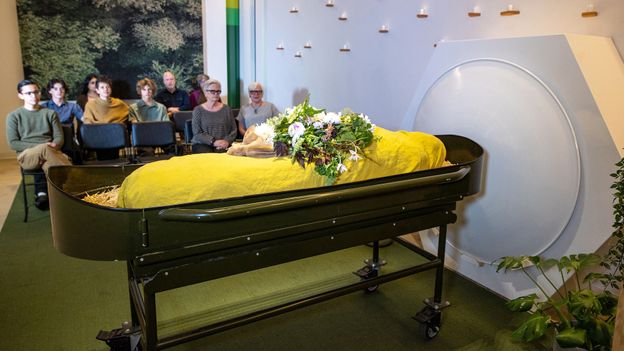 Not many of us like talking about death. It's dark, and sad, and prone to throwing us into an existential spiral. But the uncomfortable truth is that, as someone who cares about the environment, I realised I needed to stop ignoring the reality of it. Once we're gone, our bodies need somewhere to go – and the ways that we typically burn or bury bodies in the West come at a scary environmental cost.Most people in the UK (where I'm from) are cremated when they die, and burning bodies isn't good for the planet. The stats make wince-worthy reading. A typical cremation in the UK is gas-powered, and is estimated to produce 126kg (278lb) CO2 equivalent emissions (CO2e) – about the same as driving from Brighton to Edinburgh. In the US, the average is even higher, at 208kg (459lb) CO2e. It's perhaps not the most carbon-intensive thing we'll do in our lives – but when the majority of people in many countries opt to go up in smoke when they die, those emissions quickly add up.
Continued here
|
 S16 S16Clickworkers are turning against each other  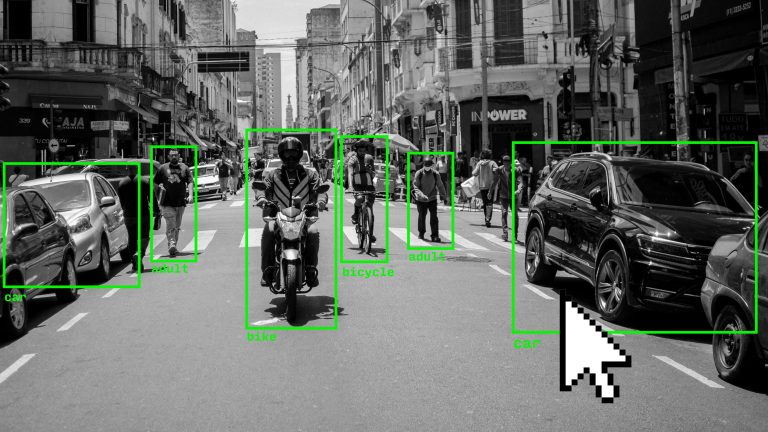 “We don’t give support to beginners,” is the first automated message one receives on joining a popular Telegram group for microworkers in Brazil. Microwork is a form of gig work consisting of simple tasks that can be completed online in a short time. Available on platforms like Appen, Amazon Mechanical Turk, and UHRS, the tasks range from typing out an entire spreadsheet to reviewing social media content moderation decisions. More recently, a popular microwork gig involves tagging objects in images to train artificial intelligence. The hours may be long but pay is adequate, Sônia Coêlho, a Brazilian microworker, told Rest of World, so long as novice “turkers” — as microworkers are informally known — are kept at bay. Turkers like Coêlho blame newcomers for triggering a drop in rates paid by microwork platforms. The community is bracing for a flood of new jobs that they believe are inevitable given the rise of AI, and experienced turkers have been trying to keep those future opportunities to themselves.
Continued here
|
 S17 S17Tears of a get-rich-quick guru  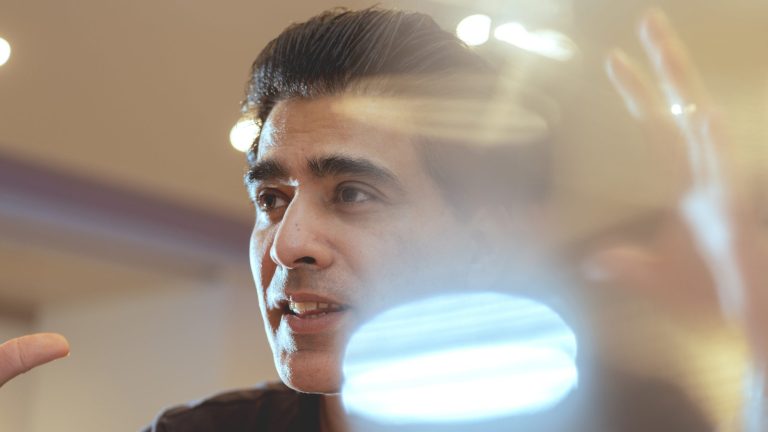 Lounging by a rooftop infinity pool, Pakistani e-commerce guru Sunny Ali speaks into his phone camera. Clean-shaven, with slicked-back black hair and a self-assured demeanor, Ali addresses his audience in Urdu, sharing tips on how to become a successful online entrepreneur. He breaks this down into what he calls the “four stages of life.” The first two stages, which he calls “kitchen income,” are about building your own business. The next two — “asset building” — involve investing in other businesses for a cut of the profits.But if they really want to succeed, Ali tells his followers, they should sign up for his “boot camp” courses, which typically cost $800 to $3,000, to learn the secrets of making a living selling products on Amazon.
Continued here
|
 S18 S18Can Dogs Use Language?   Dogs are constant sidekicks for humans, and they’re usually pretty good at letting us know what they want: a tail-wagging dance by the front door means it’s time for a walk, and a heavy head on your lap suggests that someone needs scratches.Some owners are going further to communicate with their pets. For anywhere from $20 to more than $200, dog-loving humans can purchase paw-friendly buttons, each representing a word such as “walk” or “play,” to give their pet a voice. On TikTok, some of these “button dogs” seem to be doing surprisingly intelligent things, such as combining two words to create a unique meaning—“squeaker” and “car,” to refer to an ambulance, for example. One of the more famous members of this doggie bunch on TikTok, a sheepadoodle named Bunny, can apparently put together four-word phrases. In one instance, for example, she pushed buttons to refer to her friend: “Tenrec, come, look, play.”
Continued here
|
 S19 S19We Need Comprehensive Illicit Drug Analysis Now to Stop Overdose Deaths   More than 100,000 Americans die every year from drug overdoses. We should warn people in real time about dangerous adulterants in the illicit drug marketThe devastating, drug overdose epidemic in the U.S. killed over 105,000 people last year, most from the synthetic opioid fentanyl. But while fentanyl has dominated the headlines, talk in public health circles has shifted to a new illicit drug on the street: xylazine.
Continued here
|
 S20 S20Cells Discovered Making 'Dark Oxygen' Underground   Scientists have come to realize that in the soil and rocks beneath our feet there lies a vast biosphere with a global volume nearly twice that of all the world’s oceans. Little is known about these underground organisms, who represent most of the planet’s microbial mass and whose diversity may exceed that of surface-dwelling life forms. Their existence comes with a great puzzle: Researchers have often assumed that many of those subterranean realms are oxygen-deficient dead zones inhabited only by primitive microbes keeping their metabolisms at a crawl and scraping by on traces of nutrients. As those resources get depleted, it was thought, the underground environment must become lifeless with greater depth.In new research published last month in Nature Communications, researchers presented evidence that challenges those assumptions. In groundwater reservoirs 200 meters below the fossil fuel fields of Alberta, Canada, they discovered abundant microbes that produce unexpectedly large amounts of oxygen even in the absence of light. The microbes generate and release so much of what the researchers call “dark oxygen” that it’s like discovering “the scale of oxygen coming from the photosynthesis in the Amazon rainforest,” said Karen Lloyd, a subsurface microbiologist at the University of Tennessee who was not part of the study. The quantity of the gas diffusing out of the cells is so great that it seems to create conditions favorable for oxygen-dependent life in the surrounding groundwater and strata.
Continued here
|
 S21 S21Turtle Shells Record Nuclear History  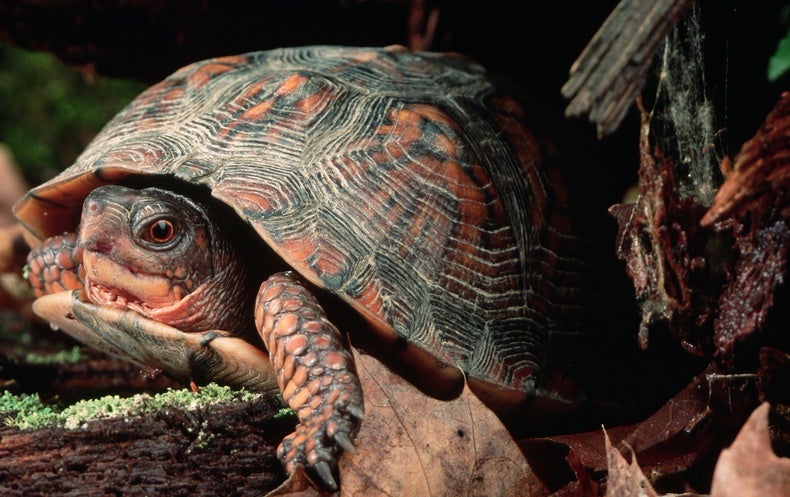 Minuscule amounts of uranium detected in the shells of turtles point to a new way to track such materials’ impacts on people and ecosystemsThe invention of the atom bomb has shaped both history and ecosystems across the globe. Its far-reaching impacts have even led scientists to consider using the signature of nuclear weapons to mark a new geologic age, the Anthropocene. Now a new study has shown that turtles taken from nuclear production and detonation sites encode the history of these weapons in their shell.
Continued here
|
 S22 S22How a Color-Changing Hogfish Knows whether Its Skin Is White, Brown or Polka-Dotted   A hogfish may provide the first example of a vertebrate with light-detecting receptor molecules that reside outside the central nervous systemLorian Schweikert was fishing in the Florida Keys when she hooked a hogfish—a type of tasty wrasse that’s known for its ability to change colors to match its coral reef environment. Schweikert dropped the animal on the boat deck and went back to casting her line. When she later went to retrieve the hogfish, she was startled to find that it had changed color to perfectly match the white deck—complete with little black circles that mimicked the textured floor.
Continued here
|
 S23 S23No One Studied Menstrual Product Absorbency Realistically until Now  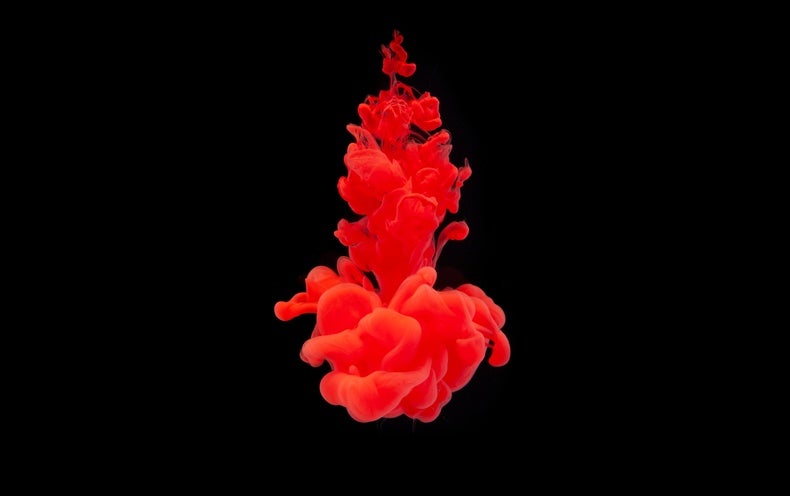 A new study reveals the absorbency of pads, tampons and other menstrual products is significantly different than labels suggestMost convenience stores or pharmacies have an aisle dedicated to “feminine hygiene” filled with shelves of various menstrual products such as tampons, pads, cups and discs. On the side of each package, you’ll find a small “absorbency” label proclaiming how much liquid blood the product is designed to hold.
Continued here
|
 S24 S24As Heat Waves Roast Texas, Batteries Keep Power Grid Humming   CLIMATEWIRE | A battery boom is helping to stabilize the Texas power grid, offering a template for utilities that want to cut their greenhouse gases even as air conditioners hum wildly during heat waves.The growth of batteries was evident last week when energy storage facilities injected a record amount of power into Texas’ electric system. It was badly needed on an evening when the state’s primary grid operator had called on consumers to conserve energy.
Continued here
|
 S25 S25The molecular love story that could help power the world   The key to revolutionizing the world's energy landscape may lie in an unlikely love story, says energy innovator Olivia Breese. She details the fateful marriage of a green electron and a water molecule -- a powerful source of carbon-free, sustainable energy -- and calls for universal investment in this potentially transformative resource. "A world which runs entirely on green energy, it's not a luxury. It's a necessity," she says.
Continued here
|
 S26 S26The Top New Features in Apple's iOS 17 and iPadOS 17   NameDrop, StandBy, and Contact Poster. These aren't rad band names, but some of the top new features coming to your iPhone next month. Apple debuted iOS 17, the new version of its mobile operating system, at its annual Worldwide Developers Conference (WWDC) alongside new hardware and new versions of iPadOS and MacOS. Wondering what's new? Can your iPhone even download iOS 17? We break it all down below, along with all the top features of iPadOS 17. With iOS 17, Apple is ending software support for the following devices: iPhone 8, iPhone 8 Plus, and iPhone X. If you have an iPhone XR and iPhone XS or newer (including the second- and third-gen iPhone SE), you can download and run iOS 17. If you're unsure what model iPhone you have, head to the Settings app and tap on General > About and look at the Model Name. This still doesn't mean every feature is available, as some require more modern processors.
Continued here
|
 S27 S27Could AI-Generated Porn Help Protect Children?   Now that generative AI models can produce photorealistic, fake images of child sexual abuse, regulators and child safety advocates are worried that an already-abhorrent practice will spiral further out of control. But lost in this fear is an uncomfortable possibility—that AI-generated child sexual material could actually benefit society in the long run by providing a less harmful alternative to the already-massive market for images of child sexual abuse.The growing consensus among scientists is that pedophilia is biological in nature, and that keeping pedophilic urges at bay can be incredibly difficult. “What turns us on sexually, we don’t decide that—we discover that,” said psychiatrist Dr. Fred Berlin, director of the Johns Hopkins Sex and Gender Clinic and an expert on paraphilic disorders. “It’s not because [pedophiles have] chosen to have these kinds of urges or attractions. They’ve discovered through no fault of their own that this is the nature of what they’re afflicted with in terms of their own sexual makeup … We’re talking about not giving into a craving, a craving that is rooted in biology, not unlike somebody who’s having a craving for heroin.”
Continued here
|
 S28 S28A New Cookbook Highlights All the Amazing Things Salt Can Do   One of the first meals I made from an exciting new cookbook was a simple stir-fry, but I would never have done it without the nudge that the book gave me. Another dish I made, Chinese brined eggs, was surprisingly easy; they simply sat in a salty bath with a few other ingredients for a couple of weeks, but in that time they transformed into something complex and introduced me to something new.The stir-fry and brined eggs are from The Miracle of Salt: Recipes and Techniques to Preserve, Ferment, and Transform Your Food, a magnificent single-ingredient trip around the world. Readers may wonder where it will go—perhaps taking deep dives in pink Himalayan, or visiting with the sauniers of France as they skim for fleur de sel. While salt types and experts like that are present, this book focuses on how to use salt and techniques to create more delicious food. In other words, it's a cookbook, and we're in the capable hands of veteran cookbook author and travel writer Naomi Duguid, whose Burma: Rivers of Flavor cookbook is among my favorites. She uses Salt's recipes to deepen our knowledge of an ingredient used by almost everyone. This is a feat, as globetrotting cookbooks can feel like they poach little bits of information from here and there, creating a whole that's less than the sum of its parts. (Full disclosure: I've met Duguid, talked shop, and shucked oysters with her several years ago at a food-writer industry event.)
Continued here
|
 S29 S29Our Favorite Paper Planners for Crossing Tasks Off Your List   If you buy something using links in our stories, we may earn a commission. This helps support our journalism. Learn more. Please also consider subscribing to WIREDBuying a new planner gives me an endorphin rush like no other, whether it’s for a new school semester, work year, or a much-needed fresh start. A good one should help you stay on track without overwhelming you. Some folks on WIRED's Gear team prefer paper planners over digital tools. Plus, writing things down has the added benefit of improving retention.
Continued here
|
 S30 S30Disney's ESPN Bet Is a Play for Younger Gamblers   With the Disney Bundle, you can have it all. Bored of Pixar? Watch the latest Marvel movie. Bored of Marvel? Check out a nature documentary on National Geographic. Bored of animals? Head over to ESPN and gorge on baseball. Still not satisfied? Have you considered gambling?Earlier this month, ESPN, owned by Disney since 1995, announced the launch of an online betting brand—ESPN Bet. PENN Entertainment, which recently ended its association with controversial Barstool Sports owner Dave Portnoy, will pay ESPN $2 billion over 10 years to use the ESPN brand for the new betting service, set to launch in the fall. And the entertainment industry, in turn, will deepen its association with gambling.
Continued here
|
 S31 S31The Best Early Labor Day Mattress Deals   Labor Day is around the corner and mattress companies are starting sales early (naturally). Our advice for buying a mattress is to never pay full price, and always look at deals with caution. Sale prices are usually the real MSRP in disguise. We keep track of prices throughout the year and have highlighted the deals that are actually good. All prices are for queen sizes.Updated August 2023: We've added deals from Casper, Dreamcloud, and Tuft and Needle. Some prices have dropped further from the likes of Helix, Birch, and My Green Mattress.
Continued here
|
 S32 S32The 43 Best Shows on Disney+ Right Now   Disney+, if you didn't know, isn't just for kids. With its ownership of the Lucasfilm brand and the Marvel titles, the streaming service also offers plenty of grown-up content in its bid to compete with Netflix and Amazon—and we’re not just talking movies. Since launching the service, Disney has used the name recognition of Star Wars and Marvel to launch scores of TV shows, from The Mandalorian to Loki. In the list below, we’ve collected the ones we think are the best to watch, from those franchises and beyond.Want more? Head to our best movies on Disney+ list if you’re looking for movies, and our guides on the best shows on Netflix and best shows on Apple TV+ to see what Disney’s rivals have to offer. Don't like our picks, or want to suggest your own? Head to the comments below and share your thoughts.
Continued here
|
 S33 S33The expanding Universe: 100 years later   From the moment in 1915 that Einstein released his theory of General Relativity out into the world, he knew he had a Universe-sized problem to reckon with. His new theory of gravitation was incredible in many ways. It reproduced all of its predecessor’s (Newtonian gravity) successes, from laboratory to Solar system scales. It successfully explained puzzles, like the precession of Mercury’s orbit, that Newtonian gravity could not. And it made several new predictions, like the deflection of starlight by massive objects, that differed from Newton’s old theories. By replacing Newton’s inverse square force law acting instantaneously between any two masses in the Universe with an underlying curved spacetime that affected and was affected by masses and all forms of energy, Einstein knew he was fomenting a scientific revolution.But Einstein himself had a doubt about what he published. He knew, after all, that the Universe was full of matter: stars were present everywhere, in all directions, for as far as astronomers could see. And he knew that the positions of these stars seemed to be stable over time, moving slowly and randomly relative to ourselves and one another. But his own theory of gravitation, if he worked out the details, showed that if you had a collection of masses randomly distributed throughout the space it occupied, the underlying spacetime would be unstable. No matter what you did, it would inevitably collapse.
Continued here
|
 S34 S34Recovering from sleep deprivation takes far longer than you think   All of us occasionally suffer from sleep deprivation. Maybe it was a late night out, a blockbuster study session, a red-eye flight, or a few straight nights of tossing and turning in bed. Whatever the reason, we all occasionally suffer the sapping consequences of sleep deprivation. But we take solace in knowing that there’s a cozy cure: a good night’s rest.Unfortunately, solving sleep deprivation may not be so simple. While extra rest does indeed remedy this frequent diagnosis, recent studies suggest that returning our mental and physical functions to full capacity takes more time than thought.
Continued here
|
 S35 S35Why quantum genius Werner Heisenberg was nowhere near beating Oppenheimer to the bomb   In the summer of 1944, the Manhattan Project, led by the physicist J. Robert Oppenheimer and Brigadier General Leslie Groves, was working relentlessly to build an atomic bomb. Their urgency was from the fear that the Nazis were building their own bomb. The Allied landings in Europe gave them the opportunity to find out for certain. Groves sent teams of soldiers and scientists, collectively known as the Alsos Mission, to follow the advancing Allied troops and gather intelligence on the Nazi atomic program. In France they found clues about German installations, scientists and equipment. Near Antwerp in Belgium, they seized some of the uranium ore that had been mined in Belgian Congo. Further missions located more ore in southern France. These were shipped to the United States. However, the majority of the ore was still somewhere in Germany, as were most of the scientists of interest. When the French 2nd Armored Division liberated Strasbourg in November 1944, it gave the Alsos Mission its first big intelligence break, for documents found in Rennes and Eindhoven had pointed to the Alsatian capital as a center of atomic research. Alsos commander Lieutenant Colonel Boris T. Pash (who had been one of Groves’ intelligence chiefs on the Manhattan Project) managed to round up several German physicists there who were disguised as medics. Dutch-born physicist Samuel Goudsmit, who led the scientific portions of the mission, followed him there, after receiving Pash’s urgent telegram.
Continued here
|
 S36 S36This 715-song playlist is scientifically verified to give you the chills, thanks to "frisson"   It’s 2006. I’m on the school bus listening to my iPod, when on comes Johnny Cash’s “Hurt.” The song begins softly, a wistful Cash singing of loss and regret over sparse acoustic plucking. As a freshman in high school, I know nothing of the song’s mature themes of aging and death. But about halfway through the song, something happens. The guitar and piano increase in volume, and Cash’s voice starts to crescendo. I feel the hairs stand on the back of my neck. A warm shiver runs up my spine, and goosebumps appear on my arms. It feels like something important is happening. I don’t know what exactly. But something is coming.
Continued here
|
 S37 S37Scientists watch broken metal heal itself   On a recent sunny day in North Carolina, Jeremy Wagner watched his kids enjoy one last ride. Waiting in the parking lot, near the Carowinds amusement park entrance, he had a commanding view of the big roller coaster, the Fury 325. Wagner’s kids had already ridden it a handful of times, going as fast as 95 miles per hour—but this time the father noticed something peculiar: a crack. One of the steel support beams seemed to swayevery time the passengers zoomed by a turn. Wagner started recording the coaster on video, and when he saw daylight shining through that fracture, he scrambled to plead with the park’s staff to shut the ride down. They seemed indifferent, Wagner told the Washington Post, but after his video went viral, Carowinds took the Fury 325 offline and ordered a new replacement beam. But what if no replacement beam were necessary? It might seem like a fanciful hypothetical—to wonder whether you could build a roller coaster with metal that could, say, heal itself, obviating the need for repairs. CBS News later reported that cracking in the Fury 325’s beam was visible up to a week before Wagner’s visit. What if the metal could have started mending itself as soon as it began to split? It’s not beyond the realm of possibility.
Continued here
|
 S38 S38 S39 S39 S40 S40Netflix plans to give away DVDs as service shuts down   In the land before streaming, there was a time when getting a Netflix DVD in the mail felt magical. Those times have largely passed, and soon the service behind it will end, as we covered in April. But on Monday, Netflix announced that customers can keep any remaining DVDs they have after September 29 once the service shuts down. Additionally, subscribers can potentially get up to 10 discs for free as the service clears out its inventory.
Continued here
|
 S41 S41In the (convection) zone: Astronomers eavesdrop on stars' innate "twinkle"   Science 101 tells us that the twinkling appearance of stars from our vantage point on Earth is due to atmospheric effects: winds and varying temperatures and densities in the air bend and distort the light. But stars have another sort of "twinkle" produced by how gases ripple in waves across their surface, an effect that could provide astronomers with a handy means of exploring the interior of massive stars to learn more about how they form and evolve. But the effect is much too small to be readily detected by telescopes.
Continued here
|
 S42 S42Atari launches replica 2600 console to go with all its replica 2600 cartridges   If you read about Atari issuing a new cartridge of a new Atari 2600 game and your first thought was, "What am I supposed to play this on?" there's an answer for you. Today, the company announced the Atari 2600+, a $130 retro console with a cartridge slot that can accept vintage and modern Atari 2600 and 7800 cartridges, plus a $25 CX40+ joystick and $40 CX30+ paddle controller bundle that appear to more-or-less faithfully re-create the originals.
Continued here
|
 S43 S43 S44 S44Zack Snyder unveils extended teaser for his Netflix sci-fi saga Rebel Moon   Years ago, director Zack Snyder had an idea for an epic Star Wars movie that he pitched to Lucasfilm. That project never panned out for a variety of reasons. But the idea continued to germinate until it became Rebel Moon, a two-part film for Netflix that Snyder and the streaming giant hope will launch a new franchise. Snyder unveiled the first extended teaser at Gamescom in Germany.
Continued here
|
 S45 S45 S46 S46 S47 S47Valves are a regular concern at SpaceX, just like every other space company   SpaceX is launching a mission about once every four days, and most of those flights are going to space to deploy Internet satellites for the company's own Starlink broadband network. But this week is different. Aside from two more missions carrying Starlink satellites, SpaceX is preparing to send a four-person crew to the International Space Station early Friday.
Continued here
|
 S48 S48What the Ruling Class Fears   This article was featured in One Story to Read Today, a newsletter in which our editors recommend a single must-read from The Atlantic, Monday through Friday. Sign up for it here.In the first spring of the pandemic, I worked a few shifts at a hospital in Brooklyn. The governor had asked on television that health-care workers volunteer, and tens of thousands did. I was surely among the least qualified—an EMT on paper, I had ’til then logged a total of 12 hours, a single overnight ambulance rotation amid the bars and projects of Manhattan’s Lower East Side. The hospital human-resources administrator noted my inexperience and asked if I was willing to work in the morgue. That’s where they could really use the help, she explained. I had been looking forward to treating the living, but on quick reflection supposed the dead were more commensurate with my level of experience and agreed to go wherever she thought best.
Continued here
|
 S49 S49Fear of an Awkward President   The teen, it seems, wanted to ask the Florida governor an earnest question. “I can’t legally vote,” the 15-year-old said to Ron DeSantis at an Iowa coffee shop recently.“It’s never stopped the other party from not letting you vote,” DeSantis interjected.
Continued here
|
 S50 S50Megan Rapinoe Answers the Critics   The retiring soccer star on her detractors, the U.S. team’s role in the global game, and taking penalty kicksOn Sunday, Spain won the FIFA Women’s World Cup. It was the end of a tournament and, for the U.S. women’s national team, the end of an era. This was the last World Cup featuring Megan Rapinoe, a player inscribed in the history of the game for both her goals and her activism. Rapinoe, who will retire later this year, has starred in so many important games for her country that it’s hard to imagine her absence on the pitch.
Continued here
|
 S51 S51What Happened to Wirecutter?   Longtime fans have turned on the product-recommendation website. An evolving internet may be to blame.Joe Casabona’s love affair with Wirecutter began in 2013, when the site recommended a pair of inductive winter gloves—the kind that let you interact with a touch screen while staying toasty. They worked well, so he kept going back; he appreciated the rigor of the site’s product reviews. An exhaustive, nearly comical amount of research went into every category: Toilet-paper recommendations were backed by 50 hours of testing. The reviewers were bona fide subject-matter experts or enterprising obsessives who approached finding the best dishwasher with the fervor of crime-scene investigators. This work was documented in the form of sprawling posts, many the length of a magazine feature. Casabona, an audio-gear specialist, remembers thinking he’d found his people. “I really felt I could trust them,” he told me, “and Wirecutter became my go-to.”
Continued here
|
 S52 S52Millions of Pages of Documents Is No Reason to Delay Trump's January 6 Trial   We’ve litigated cases with far more paperwork than that. The task was manageable and, crucially, fair.Next Monday, Judge Tanya Chutkan is expected to decide the date of Donald Trump’s federal criminal trial for his attempt to overturn the 2020 presidential election. The two parties’ proposed dates are ages apart: Special Counsel Jack Smith has requested January 2024, and Trump has asked for more than two years later than that. Yesterday, Smith submitted a brief response to Trump’s filing. Both sides contend that their suggested schedule is what normal order requires. Smith has the better argument by far.
Continued here
|
 S53 S53Audio: Vivek Ramaswamy Says He Wants 'the Truth About 9/11'   This summer, I set out to write about Vivek Ramaswamy because I thought that his public-speaking skills set him apart from his GOP presidential rivals. Whereas most candidates were struggling to find their lane, Ramaswamy knew exactly what he was offering: a message that seemed to be libertarian at its core, paired with views that were consistent with more extreme corners of the right. Ramaswamy’s team agreed to participate in the profile.Ramaswamy let me shadow him over the course of three days at the end of July. I visited his Ohio campaign headquarters and got a behind-the-scenes view of several of his media appearances. He brought me to his home and introduced me to his family. I flew aboard a private jet with him and rode on his campaign bus in Iowa.
Continued here
|
 S54 S54'Subliminals' Have a Power No Teen Can Explain   Short YouTube videos promise to change your hair color … and straighten your noise … and turn you into a soccer star.In the world of high school, every day is a battle. Recently, one of the most intimidating foes is the air. “School air,” as they call it on social media, is the latest way to explain the universal feeling of not looking your best at school. It smudges your makeup. It gives you awful hair days. It makes you look “dull” and “bad.”
Continued here
|
 S55 S55Readers Weigh In on 'Rich Men North of Richmond'   “Influencers are working overtime to co-opt this song’s popularity to support their own agendas,” one reader argues.Welcome to Up for Debate. Each week, Conor Friedersdorf rounds up timely conversations and solicits reader responses to one thought-provoking question. Later, he publishes some thoughtful replies. Sign up for the newsletter here.
Continued here
|
 S56 S56Debating Trump Is Pointless   This is an edition of The Atlantic Daily, a newsletter that guides you through the biggest stories of the day, helps you discover new ideas, and recommends the best in culture. Sign up for it here.Donald Trump has decided to skip the Republican presidential debates. That’s just as well: Debating Trump is demeaning to everyone involved, and it serves no purpose.
Continued here
|
 S57 S57 S58 S58See the Face of 24-Year-Old Bonnie Prince Charlie, Recreated Using Death Masks  /https://tf-cmsv2-smithsonianmag-media.s3.amazonaws.com/filer_public/e0/19/e01950f9-d339-428a-94a5-47eb75dec20f/bara_4.jpg) The new recreation shows what the prince might have looked like during the 1745 Jacobite risingIn 1745, Charles Edward Stuart—better known as Bonnie Prince Charlie—led a revolt against the British government, seeking to restore his father, James Francis Edward Stuart, to the throne. Now, researchers have unveiled a recreation of what the exiled royal’s face might have looked like at the time.
Continued here
|
 S59 S59Outdoor Exhibition on the National Mall Spotlights Untold American Stories  /https://tf-cmsv2-smithsonianmag-media.s3.amazonaws.com/filer_public/3d/c3/3dc3aec5-460f-4691-ac8c-943a5f9394bf/beyond_granite_-_the_soil_you_see_-_wendy_red_star_-_credit__aj_mitchell_photography.jpg) In “Beyond Granite: Pulling Together,” six artists have created works for a month-long displayOn Easter Sunday in 1939, singer Marian Anderson gave a performance that would go down in history. Barred from singing at Constitution Hall—owned by the Daughters of the American Revolution, which didn’t allow Black performers—she sang for a crowd of 75,000 from the steps of the Lincoln Memorial.
Continued here
|
 S60 S60Neptune's Clouds Have Disappeared, and the Sun Might Be Responsible  /https://tf-cmsv2-smithsonianmag-media.s3.amazonaws.com/filer_public/b8/8d/b88dd61b-4a83-4dab-abd9-de0566176477/pia01492orig.jpg) Scientists have linked shifts in the distant planet’s cloud coverage to the ever-oscillating solar cycle, which is due to peak soonAs the outermost planet in the solar system, Neptune is more than 30 times farther from the sun than the Earth is, and it takes a staggering 165 years to circle our star. From the outskirts of the sun’s orbit, Neptune bathes in only 0.1 percent of the intensity of sunlight that we get on Earth.
Continued here
|
 S61 S61Ecuadorean Voters Reject Oil Drilling in the Amazon's Yasunà National Park  /https://tf-cmsv2-smithsonianmag-media.s3.amazonaws.com/filer_public/8a/dd/8adde07e-8cce-4b64-8064-a1f772f93639/gettyimages-1258993473.jpg) The section of rainforest is one of the most biodiverse areas in the world and home to several Indigenous communitiesEcuadoreans voted to ban oil drilling in the Yasunà region of the Amazon rainforest during a referendum over the weekend. Supporters of protecting the national park, a haven for biodiversity, have hailed the vote a major victory for the planet and Indigenous rights.Â
Continued here
|
 S62 S62 S63 S63An Old Conjecture Falls, Making Spheres a Lot More Complicated | Quanta Magazine   In early June, buzz built as mathematicians landed at London's Heathrow Airport. Their destination was the University of Oxford and a conference in honor of the 65th birthday of Michael Hopkins, a mathematician at Harvard University who'd served as a mentor to many of the attendees.Hopkins made a name for himself in the late 1980s for work on seven conjectures that Doug Ravenel of the University of Rochester had formulated a decade earlier. They had to do with techniques for determining when two shapes, or spaces, that might look different are really the same. Hopkins and his collaborators proved all of Ravenel's conjectures save one, a problem with a suggestive but mysterious name called the telescope conjecture.
Continued here
|
 S64 S64How Companies Can Improve Employee Engagement Right Now   A year and a half into the pandemic, employees’ mental “surge capacity” is likely diminished. Managers must take proactive steps to increase employee engagement, or risk losing their workforce. Engaged employees perform better, experience less burnout, and stay in organizations longer. The authors created this Employee Engagement Checklist: a distilled, research-based resource that practitioners can execute on during this critical period of renewed uncertainty. Use this checklist to boost employee engagement by helping them connect what they do to what they care about, making the work itself less stressful and more enjoyable, and rewarding them with additional time off, in addition to financial incentives.As the world stumbles toward a Covid-19 recovery, experts warn of a surge of voluntary employee departures, dubbed the “Great Resignation.” For instance, one study estimates that 55% of people in the workforce in August 2021 intend to look for a new job in the next 12 months. To counteract the incoming wave of employee turnover, organizations — more than ever — need to focus on cultivating employee engagement.
Continued here
|
 S65 S65How to Say Goodbye: An Illustrated Field Guide to Accompanying a Loved One at the End of Life   Each month, I spend hundreds of hours and thousands of dollars keeping The Marginalian going. For seventeen years, it has remained free and ad-free and alive thanks to patronage from readers. I have no staff, no interns, not even an assistant — a thoroughly one-woman labor of love that is also my life and my livelihood. If this labor has made your own life more livable in the past year (or the past decade), please consider aiding its sustenance with a one-time or loyal donation. Your support makes all the difference.“Death is our friend precisely because it brings us into absolute and passionate presence with all that is here, that is natural, that is love,” Rilke wrote while ailing with leukemia. To comprehend the luckiness of death is to comprehend life itself. When a loved one is dying and we get to be by their side, it is a double luckiness — lucky that we got to have the love at all, and lucky, which is not everyone’s luck, that we get to say goodbye. Even so, accompanying a loved one as they exit life is one of the most difficult and demanding experiences you could have.How to move through it is what my talented friend and sometime-collaborator Wendy MacNaughton explores in How to Say Goodbye (public library) — a tender illustrated field guide to being present with and for what Alice James called “the most supremely interesting moment in life,” drawing on Wendy’s time as artist-in-residence at the Zen Hospice Project in San Francisco and her own profound experience at her beloved aunt’s deathbed.
Continued here
|
 S66 S66AI Can Help You Ask Better Questions -- and Solve Bigger Problems   Most companies still view AI rather narrowly, as a tool that alleviates the costs and inefficiencies of repetitive human labor and increasing organizations’ capacity to produce, process, and analyze piles and piles of data. But when paired with “soft” inquiry-related skills it can help people ask better questions and be more innovative.
Continued here
|
 S67 S67How to Make Great Decisions, Quickly   As a new leader, learning to make good decisions without hesitation and procrastination is a capability that can set you apart from your peers. While others vacillate on tricky choices, your team could be hitting deadlines and producing the type of results that deliver true value. That’s something that will get you — and them — noticed. Here are a few of a great decision:
Continued here
|
 S68 S68 Using Federated Machine Learning to Overcome the AI Scale Disadvantage  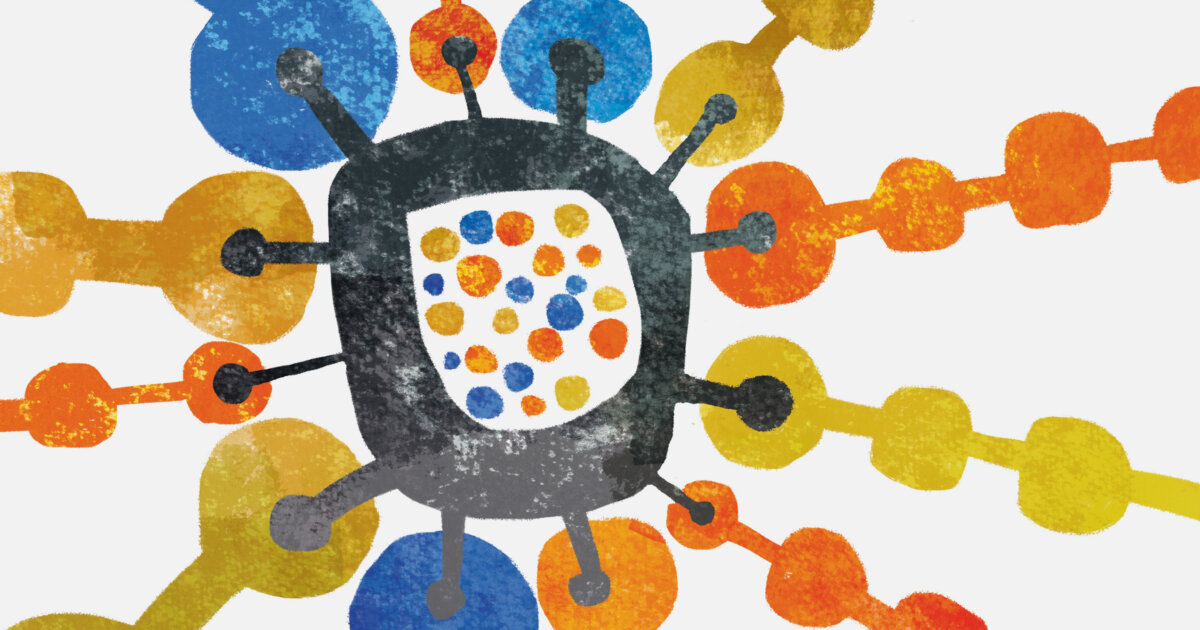 Our summer special report helps leaders gain a comprehensive view of risks, learn how to overcome market disrupters, and manage the analytical tools that provide predictive insight for decision-making.Our summer special report helps leaders gain a comprehensive view of risks, learn how to overcome market disrupters, and manage the analytical tools that provide predictive insight for decision-making.Deep pockets, access to talent, and massive investments in computing infrastructure only partly explain why most major breakthroughs in artificial intelligence have come from a select group of Big Tech companies that includes Amazon, Google, and Microsoft. What sets the tech giants apart from the many other businesses seeking to gain an edge from AI are the vast amounts of data they collect as platform operators. Amazon alone processes millions of transactions each month on its platform. All of that big data is a rich strategic resource that can be used to develop and train complex machine learning algorithms — but it’s a resource that is out of reach for most enterprises.
Continued here
|
 S70 S70Did Me Too change the workplace for Gen Z?   Like many women, I remember watching the Me Too movement mushroom as I scrolled through Facebook and Twitter in October 2017. While the hashtag #MeToo was first used in 2006 by black feminist activist Tarana Burke, who wanted to tackle sexual violence within her own community, it gained momentum following a viral tweet by actress Alyssa Milano after Harvey Weinstein’s crimes were exposed. Women around the world also began posting about how the misuse of power and privilege enabled sexual misconduct in the workplace.For many women in the workforce, the Me Too movement triggered conversations about the inappropriate (and often illegal) behaviours we’d encountered in our own careers, prompting a mix of anger, catharsis and, for some, painful re-lived trauma. But that wasn’t the case for Gen Z who were still children or teenagers. Born between 1996 and 2012, only the oldest, now workforce-aged, were in university, or applying for their first jobs, when #MeToo trended across social media and grabbed headlines.
Continued here
|
 |
TradeBriefs Publications are read by over 10,00,000 Industry Executives About Us | Advertise Privacy Policy Unsubscribe (one-click) You are receiving this mail because of your subscription with TradeBriefs.
Our mailing address is GF 25/39, West Patel Nagar, New Delhi 110008, India |




















































































































































































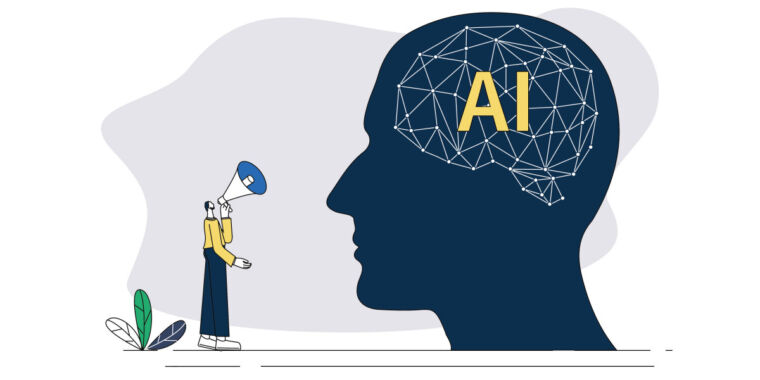
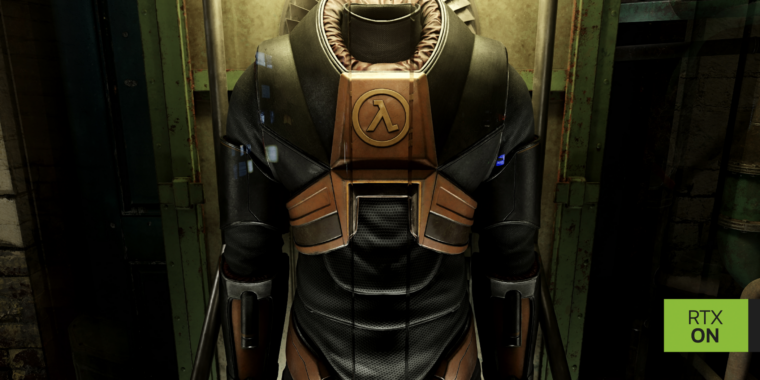



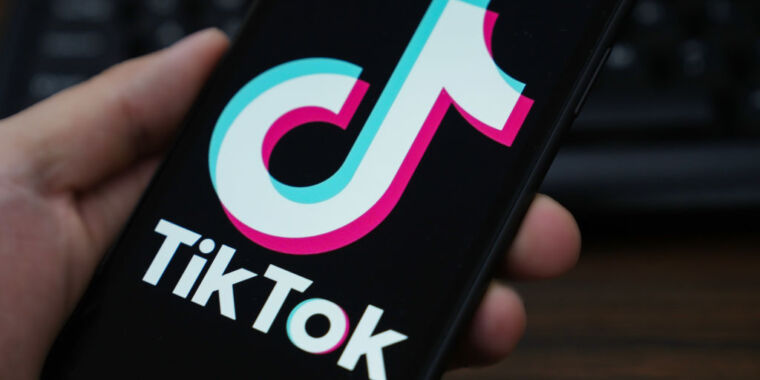














/https://tf-cmsv2-smithsonianmag-media.s3.amazonaws.com/filer_public/e0/19/e01950f9-d339-428a-94a5-47eb75dec20f/bara_4.jpg)
/https://tf-cmsv2-smithsonianmag-media.s3.amazonaws.com/filer_public/3d/c3/3dc3aec5-460f-4691-ac8c-943a5f9394bf/beyond_granite_-_the_soil_you_see_-_wendy_red_star_-_credit__aj_mitchell_photography.jpg)
/https://tf-cmsv2-smithsonianmag-media.s3.amazonaws.com/filer_public/b8/8d/b88dd61b-4a83-4dab-abd9-de0566176477/pia01492orig.jpg)
/https://tf-cmsv2-smithsonianmag-media.s3.amazonaws.com/filer_public/8a/dd/8adde07e-8cce-4b64-8064-a1f772f93639/gettyimages-1258993473.jpg)
/https://tf-cmsv2-smithsonianmag-media.s3.amazonaws.com/filer_public/b9/a2/b9a25620-244b-432c-b1dd-bacc82ed6243/30267987531_349e58ecb8_b.jpg)






